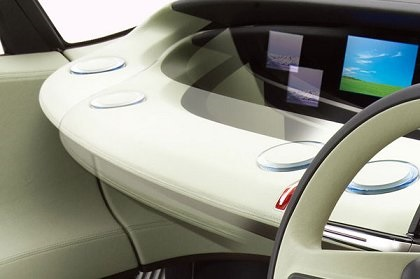2005 Honda FCX Concept
- Story Cars
.png/v1/fill/w_320,h_320/file.jpg)
- May 12
- 2 min read
The 2005 Honda FCX Concept was a forward-looking fuel cell vehicle designed to showcase Honda’s vision for the future of sustainable mobility. The concept was an evolution of the Honda FCX, which had already been on the road for several years, and it offered a glimpse into what the next generation of hydrogen-powered cars could look like. Honda presented the FCX Concept as a next-generation sedan featuring a unique, low-floor fuel cell platform that allowed for a spacious, premium interior.
One of the defining features of the FCX Concept was its low center of gravity and its ability to provide a roomy, full-sized cabin in a fuel cell vehicle—something previously thought to be unattainable. The car's design was aimed at combining futuristic aesthetics with practical functionality, offering a unique and dynamic appearance with a short front end and tapered cabin profile. The interior was designed to evoke luxury, with premium materials like leather and wood, and a host of advanced features. For example, the floating instrument panel, which adjusted its position based on the vehicle’s speed, created a sense of space and security for passengers.
The FCX Concept was equipped with Honda’s advanced intelligent technologies, which included a biometrics driving unit that recognized the driver and automatically adjusted the seating position and controls. The speed-sensitive instrument panel tilted in response to vehicle speed, enhancing the driving experience. Additionally, the line-of-sight operated switches allowed the driver to control various vehicle functions like audio and climate settings simply by looking at the appropriate icons, making it a hands-free system.
In terms of performance and technology, the FCX Concept was built on Honda’s V Flow platform, which was designed to enable efficient fuel cell usage. It featured a 100 kW fuel cell that powered three electric motors: one for the front wheels and two for the rear, offering all-wheel drive. The range was an impressive 560 km, and the system was designed to operate in temperatures as low as -20°C. The vehicle’s hydrogen tanks were located in the rear, taking advantage of the spacious design to accommodate large tanks while maintaining a low center of gravity.
Honda's vision for the FCX Concept was clear—it wasn’t just a car for eco-conscious drivers, but a car that could appeal to a broader audience. With its premium features, ample interior space, and innovative fuel cell technology, the FCX Concept was designed to prove that environmentally friendly vehicles could offer the same level of comfort and luxury as conventional cars. The FCX Concept was a serious step toward the adoption of hydrogen fuel cell vehicles, showing that Honda was pushing the boundaries of what was possible in sustainable automotive design.




































Comments